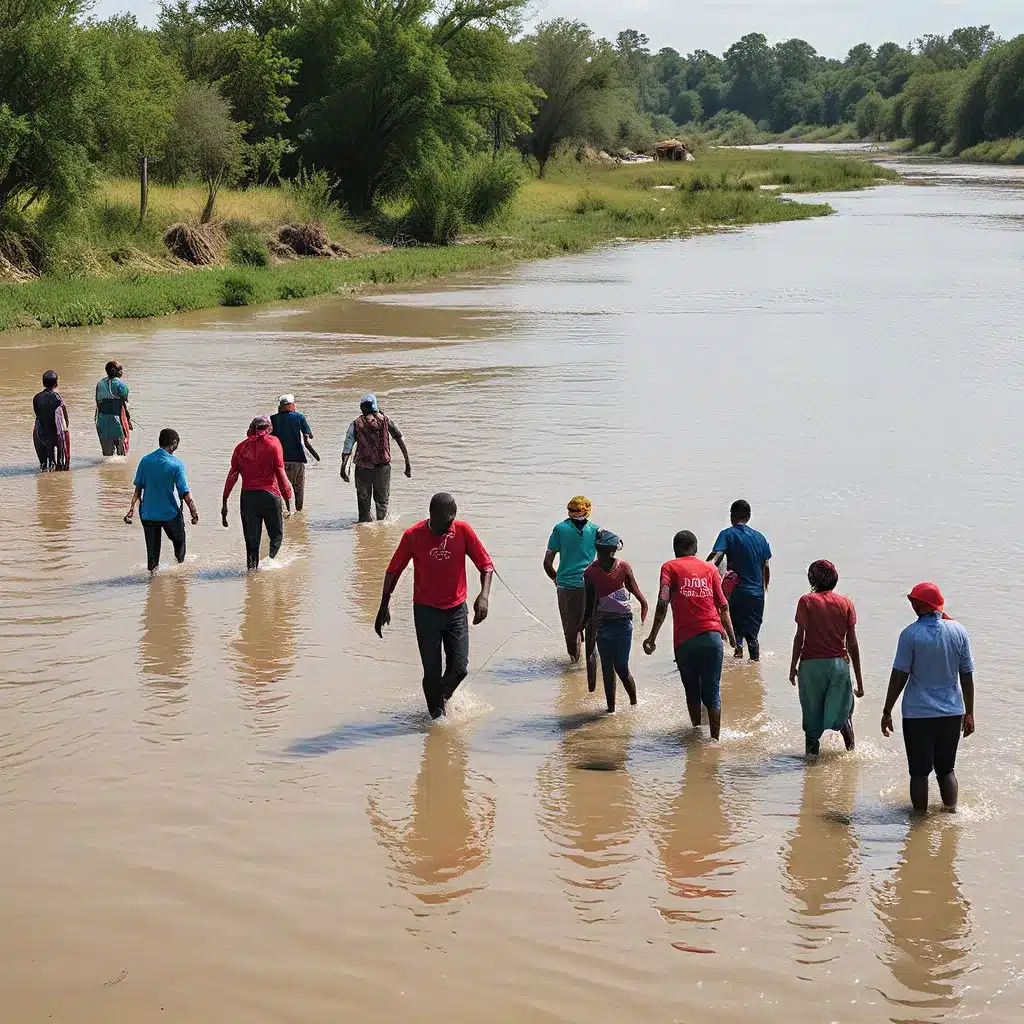
Treading Through Uncharted Waters
As I sit gazing out at the vast expanse of the Camino de Santiago, the endless horizon mirrors the complex, ever-evolving landscape of the water crisis we face today. Just as my journey on this ancient pilgrimage path has been filled with unexpected turns and unforeseen challenges, so too must we navigate the fluid frontiers of water management in these times of crisis.
In my role as a water treatment specialist, I’ve had a front-row seat to the mounting pressure on our global water resources. From drought-stricken regions to flooded urban centers, the impacts of climate change and population growth are becoming increasingly impossible to ignore. But it’s not all doom and gloom – there are glimmers of hope, innovative solutions, and resilient communities rising to meet these daunting challenges.
Confronting the Crisis Head-On
The statistics paint a sobering picture. According to the latest Global Trends Report, by 2040, nearly half of the world’s population will live in water-stressed regions. And the Frontiers in Freshwater Science journal predicts that the frequency and intensity of water-related disasters will only continue to escalate.
So, what are we to do? Throw in the towel and resign ourselves to a future of scarcity and chaos? Absolutely not. As the great Agile pioneer Jim Highsmith once said, “Complexity is not the enemy, it’s the new reality.” And it’s a reality we must embrace, adapt to, and ultimately conquer.
Embracing the Complexity
Just as the Camino de Santiago challenges pilgrims to navigate ever-changing landscapes and unpredictable weather, the water crisis we face today demands a nimble, adaptable approach. Drawing inspiration from the Agile community, we must learn to embrace complexity and thrive in uncertainty.
As Heidi Musser eloquently explains, “The Agile community has long recognized that the world is complex and ever-changing. Rather than trying to impose rigid control, Agile teams learn to navigate uncertainty, respond quickly to changing conditions, and collaborate to find innovative solutions.”
This Agile mindset is precisely what we need to tackle the water crisis head-on. By fostering a culture of experimentation, continuous learning, and cross-functional collaboration, we can uncover creative approaches to water management that transcend traditional silos and bureaucratic constraints.
Navigating the Fluid Frontiers
So, how do we put this Agile philosophy into practice when it comes to water challenges? Let’s dive in, shall we?
Embracing Uncertainty and Adaptability
Uncertainty is the new norm. We can no longer rely on static, predictive models to plan for the future. Instead, we must cultivate a mindset of continuous adaptation and rapid response to the ever-changing landscape of water scarcity, pollution, and extreme weather events.
This means regularly reassessing our strategies, gathering feedback from diverse stakeholders, and adjusting our tactics to match the fluid realities on the ground. It’s a dance of anticipation and improvisation, where we must be agile enough to pivot when our initial plans inevitably fall short.
Fostering Cross-Functional Collaboration
Tackling the water crisis requires breaking down silos and fostering collaboration across disciplines, sectors, and communities. Water management is not the sole domain of engineers and scientists – it requires the combined expertise of policymakers, urban planners, technologists, and local community members.
By bringing these diverse perspectives together, we can develop holistic, integrated solutions that address the interconnected nature of water challenges. Whether it’s implementing green infrastructure to mitigate flooding, deploying decentralized water treatment systems, or engaging citizens in water conservation efforts, the key is to harness the collective intelligence of a wide-ranging team.
Embracing Experimentation and Continuous Learning
In the face of uncertainty, we must abandon the notion of a single, perfect solution. Instead, we should embrace a culture of experimentation and continuous learning, where we test, iterate, and adapt our approaches based on the evolving realities on the ground.
This means regularly monitoring the performance of our water management initiatives, gathering feedback from end-users, and quickly pivoting when something isn’t working as anticipated. It also means staying attuned to emerging technologies, innovative practices, and cutting-edge research that can inform our strategies.
Building Resilient, Inclusive Communities
At the heart of any successful water management strategy lies the empowerment and engagement of local communities. After all, communities are the true experts on the unique water challenges they face, and they are the ones who will ultimately bear the brunt of any solutions (or lack thereof).
By collaborating with community members, incorporating their traditional knowledge, and empowering them to be active participants in the decision-making process, we can build resilient, equitable water systems that truly serve the needs of the people.
This could involve investing in decentralized water infrastructure, supporting community-led conservation efforts, or fostering educational programs that empower citizens to be stewards of their own water resources.
The Path Forward: Fluid, Flexible, and Future-Focused
As I continue my journey along the Camino de Santiago, I am reminded that the key to navigating uncharted waters is to embrace the fluidity of the situation, remain flexible in our approach, and keep our sights firmly fixed on a sustainable, equitable future.
It’s a tall order, to be sure, but the water crisis we face is nothing if not a challenge worthy of our collective ingenuity and determination. By harnessing the power of Agile thinking, fostering cross-functional collaboration, and empowering resilient communities, we can chart a course towards a more water-secure world – one step at a time.
And who knows, maybe along the way, we’ll even discover a few surprises and delights that make the journey all the more fulfilling. After all, as the old saying goes, “The road is the destination.” So, let’s embrace the fluid frontiers, dive in with gusto, and see where the current takes us.
If you’re interested in learning more about how Inland Waters is navigating the water challenges of our time, I encourage you to explore our website and connect with our team. Together, we can chart a course towards a more resilient, sustainable water future.


